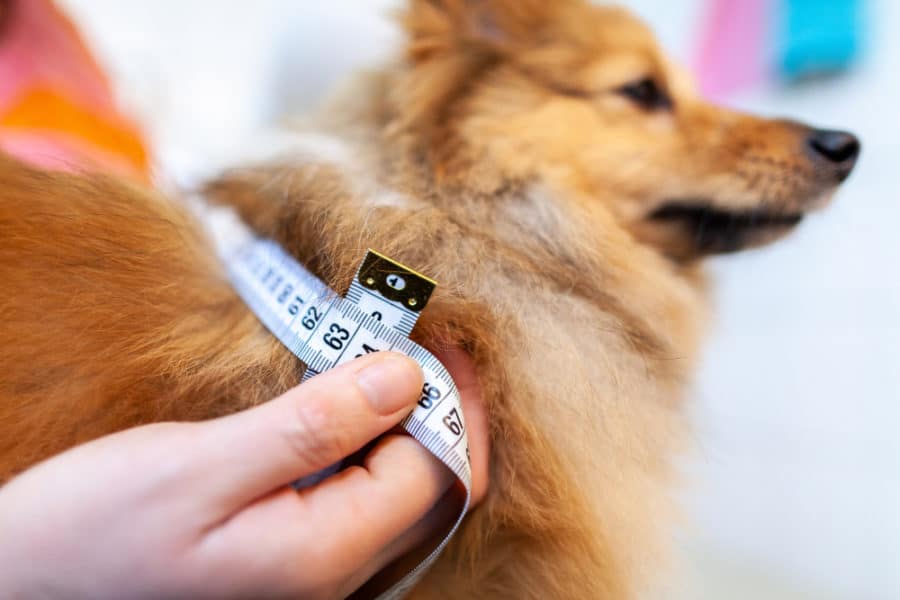Recent studies indicate that spaying and neutering can negatively impact canine health. Here’s a look at the latest research — and the alternatives to de-sexing our dogs.
For a long time now, animal health professionals and welfare advocates have been encouraging people to spay and neuter their dogs. On the surface it makes good sense, since the homeless dog problem is a serious one, and preventing more litters helps reduce animal overpopulation and suffering, and reduces strain on shelters and rescues. But more recently, a growing body of evidence indicates that spaying or neutering — particularly as it relates to large breeds de-sexed early in life — significantly increases the risk of serious health problems.
What are the studies saying?
1. Ovary removal significantly increases the risk for major fatal disease in female Rottweilers.
A study from the Gerald P. Murphy Cancer Foundation found a correlation between the age at which female Rottweilers are spayed and their lifespan. The study compared female Rotties who lived to be 13 or older, with a group who lived the expected lifespan of about nine years.
“Female dogs in our study had a distinct survival advantage over males. But taking away ovaries during the first four years of life completely erased the female survival advantage,” noted David J. Waters, lead researcher and professor at Purdue University. “We found that female Rottweilers that kept their ovaries for at least six years were four times more likely to reach exceptional longevity compared to females who had the shortest lifetime ovary exposure.”
Simply put, study results indicate removal of a Rottweiler’s ovaries significantly increases the risk for a major lethal disease such as cancer.
2. In de-sexed golden retrievers, rates of joint disease and cancer are much higher than in intact dogs.
A recent study conducted at the University of California, Davis provides additional evidence that spaying or neutering, and the age at which it is done, may increase a dog’s risk of certain cancers and joint diseases.
The study looked at the health records of 759 golden retrievers. The dogs ranged in age from one to eight years, and had been seen at the UC Davis William R. Pritchard Veterinary Medical Teaching Hospital for one or more of the following problems:
- Hip dysplasia
- Cranial cruciate ligament tear
- Lymphosarcoma
- Hemangiosarcoma
- Mast cell tumor
The researchers focused on joint disorders and cancers because de-sexing removes the testes or ovaries and disrupts the production of hormones that play an important role in body processes like bone growth plate closure.
Study results indicated that for all five diseases, the rates were significantly higher in both males and females that were neutered or spayed (before or after one year of age) compared with intact dogs.
Results showed a 100% increase in the rate of hip dysplasia in male goldens neutered before 12 months of age; 10% were diagnosed with the condition, double the rate of occurrence in intact males. Past studies have reported a 17% increase among all neutered dogs compared to all intact dogs.
The researchers suggest that neutering male golden retrievers well beyond puberty will help prevent an increased risk of hip dysplasia, cranial cruciate ligament injury, and lymphosarcoma. For female goldens, the research team concluded that: “… the timing of [spaying] is more problematical because early [spaying] significantly increases the incidence rate of CCL from near 0% to almost 8%, and late [spaying] increases the rates of hemangiosarcoma to four times that of the 1.6% rate for intact females.”
3. Vizsla study suggests a significantly increased risk for cancer and behavioral disorders in spayed or neutered dogs.
A 2014 study of over 2,500 Vizslas revealed that dogs neutered or spayed at any age were at significantly increased risk for developing mast cell cancer, lymphoma, and all other cancers combined, as compared with intact Vizslas.
Dogs of both genders neutered or spayed at six months or younger also had significantly increased odds of developing a behavioral disorder, including separation anxiety, noise phobia, timidity, excitability, submissive urination, aggression, hyperactivity, and/or fear biting. All neutered or spayed Vizslas were at greater risk for thunderstorm phobia than intact dogs, regardless of age at neutering.
The younger the age at neutering, the earlier the age of diagnosis with mast cell cancer, hemangiosarcoma, lymphoma, all other cancers combined, behavioral disorders or fear of storms.
Spayed female Vizslas had a nine times higher incidence of hemangiosarcoma compared to intact females, regardless of when spaying was performed; however, no difference in incidence of this type of cancer was found for neutered versus intact males.
Neutered and spayed dogs had a 4.3 times higher incidence of lymphoma, regardless of age at time of neutering, and a five times higher incidence of other types of cancer.
Spayed female Vizslas had a 6.5 times higher incidence of all cancers combined compared to intact females, and neutered males had a 3.6 times higher incidence than intact males.
4. German shepherds de-sexed before one year of age have a tripled risk of joint disorders.
Another very recent study was conducted at UC Davis, this time involving German shepherds. The results suggest that spaying or neutering before one year of age triples the risk of joint disorders, in particular cranial cruciate ligament tears, in these dogs.
The researchers analyzed the veterinary records of 1,170 German shepherds, both neutered/spayed and intact, for a 14.5-year period. They looked for joint disorders and cancers already linked to de-sexing, and separated the dogs into categories that included intact, de-sexed before six months, between six and 11 months, and between 12 and 23 months.
The study found that 7% of intact males were diagnosed with one or more joint disorders compared with 21% males neutered prior to one year of age. Five percent of intact females developed joint disorders, compared with 16% of females spayed before one year.
Intact female German shepherds were found to develop mammary cancer at a rate of 4%, compared with less than 1% of females spayed before one year. Intact females had no diagnosed incidence of urinary incontinence, compared with 7% of females spayed before one year.
“Simply delaying the spay/neuter until the dog is a year old can markedly reduce the chance of a joint disorder,” said lead researcher Dr. Benjamin Hart of the US Davis School of Veterinary Medicine.
Since simply delaying a spay or neuter until a dog is older doesn’t address all the health challenges we see in de-sexed versus intact dogs, we need to investigate alternative methods of sterilizing that do not involve removing the ovaries or testes.
Sterilizing rather than de-sexing
Over the years, I’ve changed my own view on spaying and neutering dogs, based not just on these studies, but also on the health challenges faced by so many of my canine patients after I spayed or neutered them. These were primarily irreversible metabolic diseases that appeared within a few years of a dog’s surgery.
These days I work with each individual dog owner to make decisions that provide the most health benefits for the dog. Whenever possible, I prefer to leave dogs intact, but this approach requires a highly responsible pet guardian who is fully committed to and capable of preventing the dog from mating (unless he or she is a responsible breeder and that is the goal). Luckily, my clients are incredibly responsible and educated, and I’ve never had a single unplanned pregnancy in my veterinary career. But I’m not providing veterinary care to the entire world, and the world is full of irresponsible people.
My second choice is to sterilize without de-sexing. This means performing a procedure that will prevent pregnancy while sparing the testes or ovaries so they continue to produce hormones essential for the dog’s health. This can be done at any age. It typically involves a vasectomy for male dogs, and a modified spay or females. The modified spay removes the uterus while preserving the hormone-producing ovaries. This procedure is less invasive, requires shorter time under anesthesia and still yields the same results with no negative side effects.
Generally speaking, mature intact dogs have the benefit of a lifetime of sex hormone production, so the endocrine imbalances we see with spayed or neutered puppies and young dogs don’t occur when dogs are de-sexed in their later years.







